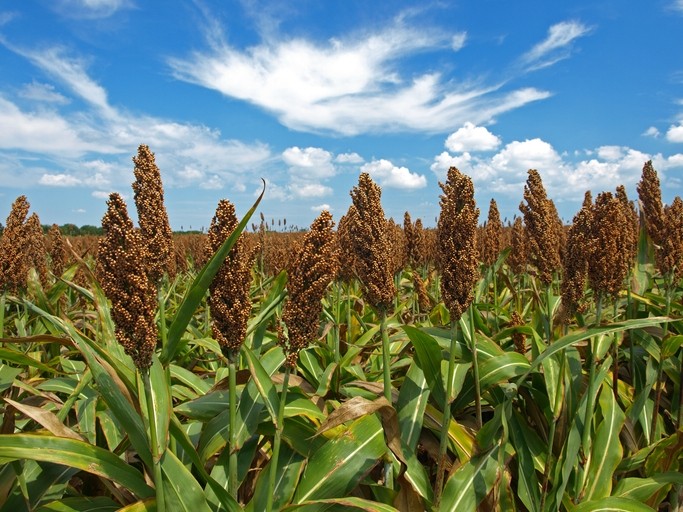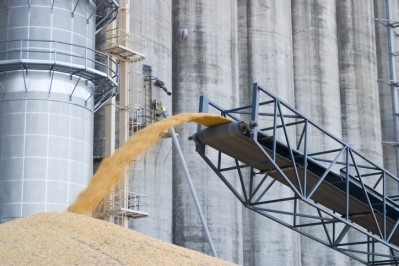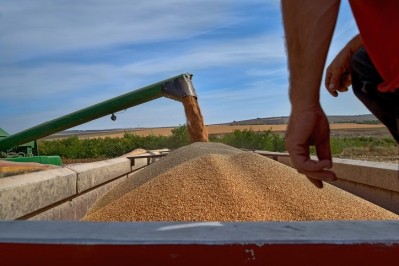Sorghum: time for a revival?

“I grew up on a farm in Nebraska, where we grew beans, wheat, and sorghum in rotation. Now that area is corn on corn on soybeans - it’s a monoculture cropping system. The farmers I talk to say they would love to grow sorghum but nobody’s buying it and the grain elevator won’t take it. The hog feeders there don’t know about it, so they don’t want it,” said Nate Blum, head of the newly formed NGO Sorghum United and an enthusiastic advocate for sorghum.
This illustrates why sorghum is being underutilized as a crop for both human and animal nutrition, he said.
“Sorghum has fallen so far out of common awareness. If processors don’t know about it, how can they request it? We are talking about farms who haven’t grown sorghum in a generation or more.”
It’s not that sorghum isn’t grown anymore - it is - and on a large scale. At present, sorghum is planted annually on just over 100 million acres, and according to USDA figures, last year the US produced 188 million bushels of sorghum. 93% was exported to China, where it is principally used as bird feed and to produce a spirit called baijiu, said Blum. Most of the remainder was diverted for feedstock by the ethanol industry, with the DDGS from the process winding up as livestock feed. Only a small quantity of sorghum production is used directly as animal feed, he said.
Developing value chains
But Sorghum United’s agenda isn’t about raising the amount of sorghum that is grown for global commodity markets - quite the opposite in fact - it is about raising awareness of the grain’s value among growers, producers, and consumers.
The NGO, which has 100 stakeholders across the world representing all parts of the value chain, was created this year with the mandate of developing regional value chains for sorghum, for the purposes of food security, improving nutritional outcomes, creating economic opportunities, and providing environmental responses to a warming climate, Blum explained.
“Whether in the US, the UK, Uganda, or Jordan, we want to create opportunities for farmers to connect with local processors, and in doing so, mitigate their risk in commodity markets by growing this variety that the processor needs. The processor - whether in snack food or animal feed - can better control their supply by being close to the farmers. Our job is to give these companies the tools to be successful,” explained Blum.
He said he recognized this was a major challenge, owing to its “chicken and egg” nature.
“We have to increase demand while we increase supply. We’re not going to encourage farmers to grow a crop they can’t make money on because they need to be economically sustainable, so our job is to connect them with processors, and advocacy plays a major role here,” he said.
Climate-smart crop
So too, does the crop’s ‘trump card’ - its climate resilience. Sorghum has a long history of being grown in harsh environments. On a macro level, sorghum’s climate-smart characteristics could mean it has a role to play in feeding a growing global population sustainably, whilst at an individual farm level, the grain has the potential to lower financial risk in the face of more extreme weather patterns, according to Blum.
“Sorghum checks a lot of boxes in responding to the challenges our world faces right now. It is a hardy, drought resistant grain that can grow in difficult environments, using a third of the water other common crops require, whilst providing a tremendous nutritional profile,” he said.
He said the lower input costs, which result from sorghum’s low water requirement, are often forgotten when talking about farm revenues and profit potential.
“Farmers like to talk about growing 300 bushels of corn per acre, which is great, but what are the input costs? With sorghum not only do we use a third of the water, but the seed costs are less. It costs about $15 per acre to plant sorghum versus $25-30 to plant corn. When the lower input costs are factored in, they compensate for the lower yields.”
Another factor in sorghum’s favor is that when added to a rotation, it benefits the soil, said Blum: “In rotation, sorghum promotes improved soil structures and microbiology, which means that less fertilizer will be needed when another crop is rotated the next year. In fact, producers often see an average of 8% increase in corn yields when planted after sorghum. Including a sorghum rotation in cropping systems also breaks disease and pest cycles in other crops.”
Carbo-sequestering root system
Research has also suggested that sorghum can decrease the carbon intensity of crop production owing to its carbon-sequestering properties.
Blum highlighted a project that has recently been awarded $65m from the USDA through its new Partnerships for Climate-Smart Commodities initiative. Led by National Sorghum Producers, the project will quantify the environmental impact of incorporating sorghum and other tools into rotations.
Historically, perceptions of sorghum as an inferior feed grain may have been a barrier to use, owing to the presence of tannins. However, Blum said that tannins had been bred out of the seeds through traditional breeding methods.
He went on to explain that sorghum had been left behind by seed research - especially in relation to lab-based genetics - owing to a lack of investment.
“In some ways this is a double-edged sword,” he said. “It has been one of the biggest challenges for the industry but at the same time the result is that there is no genetically modified sorghum, which is perceived as a benefit by countries who want non-GM crops.”
However, there are signs that this is starting to change, with more countries and institutions putting dollars into genomics R&D, he said.















